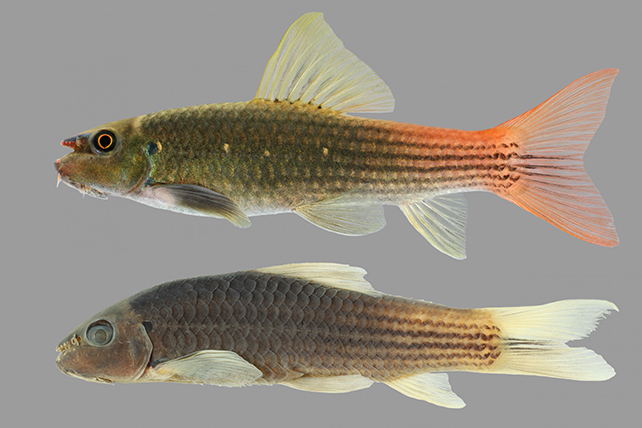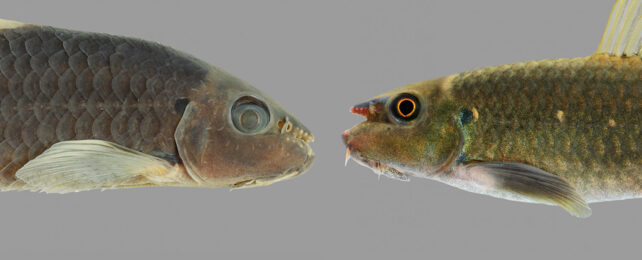Sometimes it's not necessary to travel far, dig deep, or climb high to find a new species: sometimes they're hiding in plain sight, as is the case with the redtail garra, which has just been classified as a species of its own.
The fish has been a popular choice for people with aquariums since the early 2000s, but for a by-the-book scientific discovery, a species needs to be observed in its natural habitat. That's part of the reason it has gone without an official classification for so long.
In this case, experts came across several redtail garras during fieldwork along the Kasat River at the border of Thailand and Myanmar, which flows into the Ataran River in Myanmar. From there, they were able to carry out the most detailed analysis of the fish yet.

"When we first collected specimens, we thought it must be widespread in Myanmar because of its popularity in the aquarium trade," says ichthyologist Larry Page, from the Florida Museum of Natural History.
"But it turns out it's not. It's only in the Ataran River basin. There's surprisingly little information on their natural history."
The new species is interesting in several ways: it has a unique color scheme, including the red tail that gives it its name. They occasionally eat arthropods, but dine mainly on algae, which of course helps with cleaning aquariums.
These fish come with highly specialized mouths, featuring a disc-like structure on the lower lip that helps them stay stable in fast-moving water while feeding. They also have a hardened and encrusted snout that seems to be used as a defense mechanism.
The redtail garra joins nearly 200 other species in the Garra genus, one of the most diverse groups there is – both biologically and geographically. These fish can be found all across regions of Africa, the Middle East and Asia.
Alongside the announcement of their species classification, the researchers have called for more work to be done in identifying fish scientifically in regions like this – which gives us a better understanding of how best to protect them.
The new species name, Garra panitvongi, comes from renowned author and ichthyologist Nonn Panitvong, who found a population of the fish in Thailand in 2006. While Panitvong wasn't directly involved in the new research, he has dedicated his life to promoting biodiversity.
"I like to imagine humanity in a big room, painted in white," says Panitvong. "As we turned around, we would have no conception of which direction we were facing."
"With each new discovery, a dot is added, a point made, and we know more and more about where we stand as a species."
The research has been published in Zootaxa.
